Blackheads are a stubborn concern for many, and searching for an effective, gentle way to tackle them often leads to the humble jar of Vaseline. But can Vaseline really help remove blackheads? The answer lies in how this classic occlusive works. Vaseline, or petroleum jelly, doesn’t dissolve blackheads or dig out impurities on its own. What it does offer is a way to soften the material inside your pores, making blackhead removal safer and less aggressive. This method is not a miracle cure, but under the right circumstances, it can be a smart addition to your skincare routine.
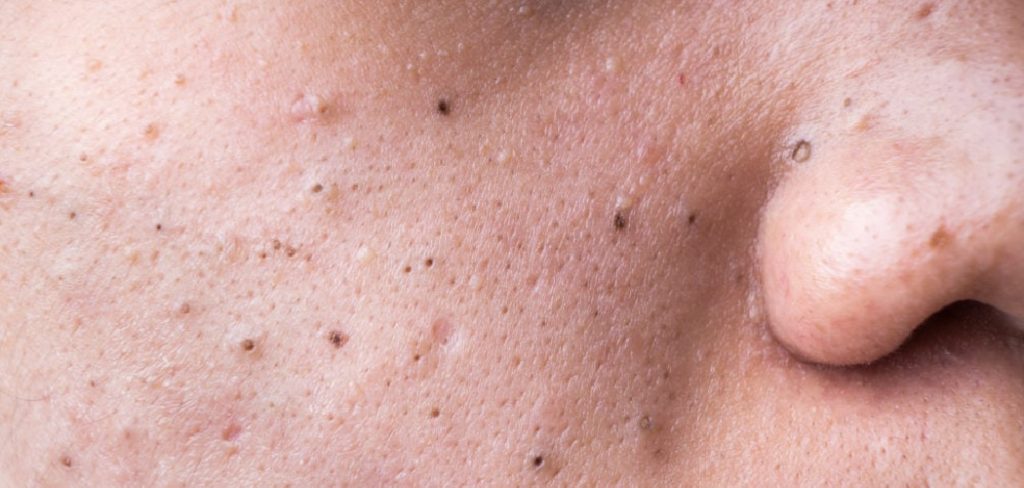
It’s crucial to understand that Vaseline may not be suitable for everyone. Those with highly acne-prone or oily skin should proceed with caution or potentially skip this technique. Still, for selected skin types, using Vaseline to soften blackheads before extraction can minimize the risks that come with forceful squeezing or harsh scrubs.
In this comprehensive guide, you’ll learn how to remove blackheads with Vaseline by prepping your skin, performing the occlusion technique, practicing safe extraction, and following up with proper aftercare. We’ll also discuss who should avoid this method and share essential safety tips and prevention strategies. Let’s get started on the path to clearer, smoother skin.
Blackhead Basics and Occlusion Science
What Blackheads Are
Before you reach for any remedy, it helps to understand what you’re treating. Blackheads are a type of non-inflammatory acne called open comedones. They form when excess oil (sebum), dead skin cells, and debris clog a pore. When the top of this plug remains open and exposed to air, the contents oxidize, turning the surface black or dark brown. Unlike whiteheads, which are covered by skin, blackheads are open and thus prone to appearing more noticeable, especially on the nose, chin, and forehead.
How Occlusives Soften Plugs
Occlusives like Vaseline work by creating a barrier on the skin’s surface, trapping moisture and warmth underneath. This process helps soften the oxidized sebum and keratin material that make up blackheads. When the plug is moister and more pliable, gentle extraction becomes easier and less traumatic to the skin. The occulsion method doesn’t clear the pore on its own, but it does prepare the skin so extractions can be done more safely and effectively.
Who Should Skip This Method
The Vaseline occlusion method isn’t right for everyone. Individuals with active acne lesions, infections, very oily skin, or a history of reacting poorly to petroleum jelly should avoid this technique. If your skin is easily congested or you’re prone to cystic breakouts, it’s best to consult with a dermatologist before using occlusive methods. Never use this approach over broken skin or areas with a recent procedure.
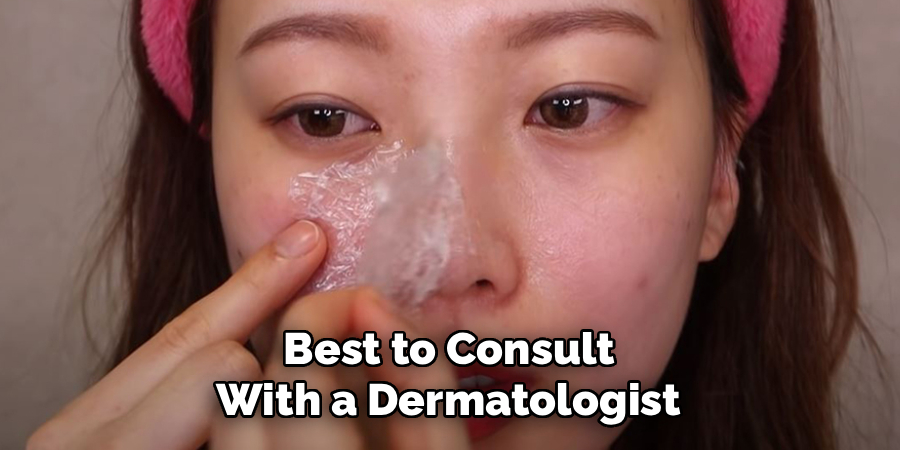
Safety First: Suitability and Patch Test
Who Benefits vs. Who May React
Most people with dry to normal or combination skin can benefit from the Vaseline occlusion method for blackhead removal when performed correctly. It’s also appropriate for those who find physical exfoliation too harsh. However, if you have highly sensitive, reactive, or acne-prone skin, you’re more likely to experience irritation or clogged pores. Always consider your skin’s history before trying a new approach.
How to Patch Test with Petroleum Jelly
Before you cover your nose or another area with Vaseline, it’s vital to do a patch test. Apply a small amount of petroleum jelly to a less visible part of your face, like the jawline, and leave it on overnight. The next day, check for any redness, bumps, itching, or discomfort. If any reaction occurs, do not proceed with the occlusion process. If all is clear, the risk of sensitivity is low, and you can move ahead confidently.
Red Flags: When Not to Proceed
If your patch test results in redness, swelling, bumps, breakouts, or stinging, stop immediately. Never use this technique on areas with active inflammation, pustules, cuts, or open sores. If you experience a reaction during or after the occlusion, rinse thoroughly with a gentle cleanser and apply a calming product. Persistent irritation should be evaluated by a skincare professional.
Prep: Clean Skin and Warmth
Double Cleanse to Remove SPF and Makeup
A clean canvas is critical for safe and effective blackhead removal. Begin your prep by double cleansing your skin. Use an oil-based cleanser first to dissolve sunscreen, makeup, and surface oil. Follow up with a gentle water-based cleanser to thoroughly remove debris and ensure no residue is left. This two-step approach keeps your pores as clear as possible before occlusion.
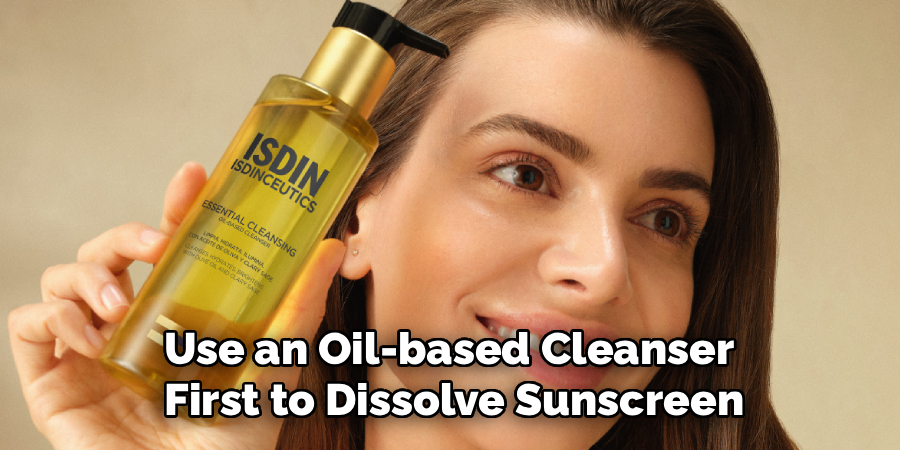
Gentle Steam or Warm Compress
To further loosen blackheads, introduce warmth. You can either steam your face gently over a bowl of hot (but not boiling) water for 5–7 minutes or apply a soft, warm, damp washcloth to the affected area for a few minutes. This step helps open pores and makes the occlusion treatment more effective, all while avoiding harshness.
Sanitize Tools and Hands
Hygiene is non-negotiable when dealing with pores. Wash your hands with soap and water before touching your face. If you plan to use extraction tools, sanitize them with alcohol and dry them thoroughly. This precaution reduces the risk of infection and keeps the process as clean as possible.
Step-by-Step Guide: How to Remove Blackheads with Vaseline
Mastering each step of this method is the key to safe results. Always proceed gently and patiently.
Step 1: Apply a Thin Layer Over the Target Area
Using clean hands or a sanitized cotton swab, apply a thin film of petroleum jelly over the areas with blackheads—commonly the nose, chin, or forehead. Don’t overdo it; just enough to create an even, glossy coating is sufficient. Avoid the delicate eye area and any broken or irritated skin.
Step 2: Occlude with Plastic Wrap for 10–15 Minutes
Cut a small piece of clean, food-grade plastic wrap large enough to cover the Vaseline layer. Gently smooth it over the treated area. The plastic wrap works alongside the occlusive by trapping additional heat and moisture, further softening blackhead contents. Leave the wrap on for 10 to 15 minutes, staying relaxed and comfortable during this wait.
Step 3: Remove Wrap and Gently Massage
After the waiting period is up, carefully peel away the plastic wrap. Using clean fingertips, gently massage the area in small, circular motions for about a minute. This helps move softened material closer to the surface and can loosen the blackhead plug even more.
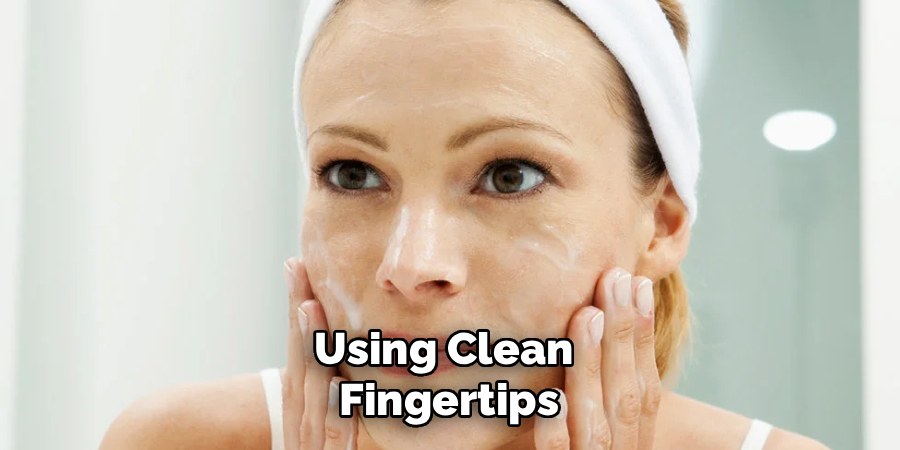
Step 4: Wipe Off with Soft Tissue or Cotton
Next, take a soft tissue or a cotton pad and gently blot away the excess petroleum jelly. Avoid rubbing or pulling at your skin, which can irritate. The goal is to remove most of the Vaseline while keeping the freshly softened blackhead area undisturbed.
Step 5: Rinse and Cleanse to Remove Residue
Finish this part of the routine by washing away any remaining Vaseline. Use a gentle, non-stripping cleanser and lukewarm water. This final cleanse ensures no occlusive residue remains, reducing the risk of future clogged pores and preparing the skin for either extraction or your next skincare step.
Extraction Hygiene: If You Choose to Extract
Once the pores are prepped and the contents softened, you may proceed with gentle extraction—but this step is fully optional and must be done with great care.
When to Stop vs. When Gentle Pressure Is Okay
Only attempt extractions if the blackhead is visibly loosened and comes out with the slightest pressure. If there’s any resistance or pain, do not continue. Forcing a blackhead can damage skin tissue and lead to scarring or infection. Less is more—sometimes several tries spaced days apart are safer than one aggressive session.
Loop Tools vs. Finger Technique with Cotton
If you use a stainless steel comedone extractor, sterilize it with alcohol before and after each use. Loosely wrap your fingers with a tissue or cotton and gently press around—not directly on—the blackhead to coax it out. Work methodically and never dig or poke at your skin. If the plug doesn’t lift easily, stop and try again after your next routine.
Post-Extraction Sanitization
Once you’ve finished, cleanse the area again with a mild, soothing toner or cleanser. Sterilize any tools you used with alcohol. Always wash your hands afterward. This quick wrap-up step ensures the skin’s barrier remains healthy and helps prevent infection or breakout formation.
Aftercare to Soothe and Protect
Proper aftercare turns a good extraction into a great, skin-friendly result. Soothe, hydrate, and shield your skin to lock in benefits and minimize irritation.
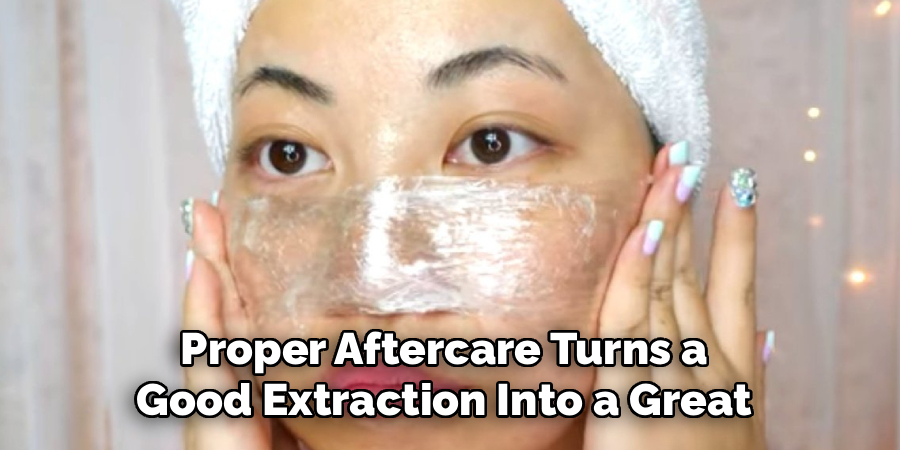
Hydrating Toner/Serum and Non-Comedogenic Moisturizer
Start by applying a hydrating toner or essence to rebalance and calm your skin. Look for alcohol-free formulas with ingredients like glycerin, hyaluronic acid, or aloe. Follow with a non-comedogenic moisturizer that restores hydration but won’t clog pores. Lightweight gel or lotion textures are ideal for keeping skin dewy and comfortable after extractions.
Calming Ingredients (Niacinamide, Panthenol)
If your skin feels warm, tight, or slightly flushed, consider soothing it with calming ingredients such as niacinamide or panthenol. Niacinamide helps reduce redness and supports healing, while panthenol builds the skin barrier. These ingredients are found in many serums and moisturizers and are especially beneficial post-extraction.
SPF the Next Day to Prevent Dark Spots
Even minimal extractions can make your skin slightly more sensitive to sunlight. The next morning, apply a broad-spectrum sunscreen with at least SPF 30 to the treated area. This step is crucial to prevent post-inflammatory hyperpigmentation and helps your skin heal evenly without dark spots or uneven tone.
Prevention: Keep Pores Clear Long-Term
Removing blackheads with Vaseline can offer a fresh start, but prevention keeps them from coming back. A combination of gentle exfoliation, oil control, and hygiene habits works best.
Gentle Chemical Exfoliants (BHA)
Beta hydroxy acid (BHA)—most commonly salicylic acid—penetrates deep into pores, dissolving oil and dead skin that lead to blackheads. Incorporating a BHA product two to three times a week can maintain clear pores and reduce blackhead recurrence. Start slow if you’re new to acids, and always follow with moisturizer and SPF.
Oil Control and Non-Comedogenic Makeup
Choosing oil-free, non-comedogenic skincare and makeup is vital for blackhead-prone skin. Heavy oils and occlusive cosmetics can exacerbate clogged pores and undo your hard work. Look for “non-comedogenic” on product labels and consider mattifying primers or powders to reduce excess shine throughout the day.
Cleansing and Storage Hygiene
Make a habit of thoroughly cleansing your skin morning and night, especially after sweating or wearing sunscreen and makeup. Regularly wash pillowcases, face towels, and makeup tools to prevent the buildup of oil and bacteria. Stored hygiene, though often overlooked, supports long-term pore health.
Common Mistakes and Fixes
Even the most careful skincare enthusiast can slip up. Watch out for these common errors and know how to course-correct for safer, more effective results.
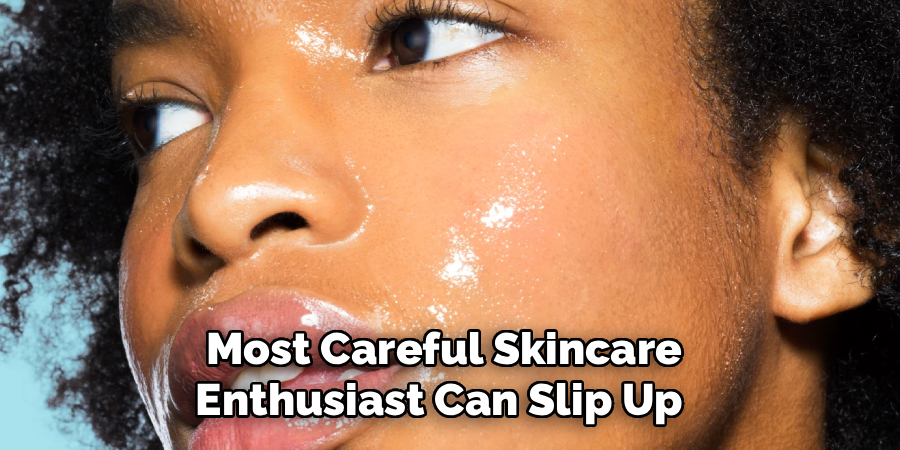
Over-Occluding or Too Much Pressure
More isn’t always better. Applying too much Vaseline or occluding for longer than 15 minutes can backfire, leaving your skin greasy and increasing the risk of breakouts. When extracting, avoid excessive pressure; if a blackhead won’t budge, try the routine again later or consult a professional.
Using on Active Acne or Open Cuts
Never use the Vaseline and occlusion method on areas with pimples, inflamed acne, or broken skin. This can trap bacteria, worsen inflammation, and lead to scarring. Stick to healthy, intact skin—if in doubt, err on the side of caution.
Skipping Aftercare and SPF
Post-extraction care is not optional. Skipping hydration or sun protection can result in irritation, dryness, or dark spots. Always follow your routine with a soothing moisturizer and apply SPF the next morning to shield skin as it recovers.
Conclusion
The Vaseline occlusion method for blackhead removal is a gentle yet effective way to loosen stubborn plugs and pave the way for safer extraction. By taking time to prepare your skin, performing each step with care, and following up with proper aftercare, you can achieve softer, cleaner pores without relying on harsh treatments. Remember, this approach isn’t a cure-all and isn’t suitable for every skin type, but when used thoughtfully, it’s a powerful tool in your skincare arsenal.
If you’re considering how to remove blackheads with Vaseline, focus on patience, hygiene, and ongoing prevention for the best results. With mindful practice, your skin can stay clear, comfortable, and radiant—ready to face the day with renewed confidence.
About the Author
Jane Hubbard is a passionate beauty expert with a wealth of experience in makeup, hair, and overall beauty techniques. After years of working as a hairdresser specialist, she followed her entrepreneurial spirit and started her own consultancy business.
Jane has always been driven by her desire to help others feel confident in their own skin, and she does this by sharing her knowledge, experiences, and practical beauty tips. Through her consultancy, she empowers individuals to embrace their unique beauty, offering tailored guidance that boosts both self-esteem and personal style.
Professional Focus
- Specializes in makeup, hairstyling, and beauty consulting.
- Provides personalized beauty advice, tips, and techniques to help individuals feel confident in their appearance.
- Dedicated to staying up-to-date with the latest industry trends and developments.
- Passionate about creating a comfortable and empowering experience for every client.
Education History
- University of Craft and Design – Bachelor of Fine Arts (BFA) in Woodworking and Furniture Design
- Woodworking Apprenticeships – Extensive hands-on training with skilled craftsmen to refine carpentry and furniture making techniques
- Online Courses & Masterclasses – Continued education in advanced woodworking techniques, design principles, and specialized tools
Expertise:
- Makeup artistry, hairstyling, and beauty consulting.
- Personalized beauty techniques to enhance confidence and self-expression.
- Educating clients on how to maintain their beauty routines at home.
